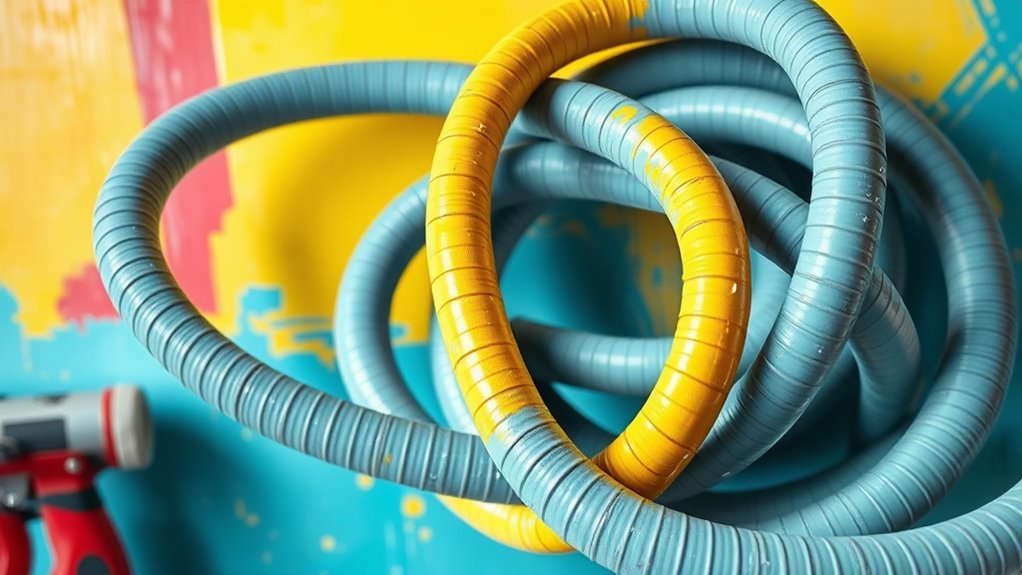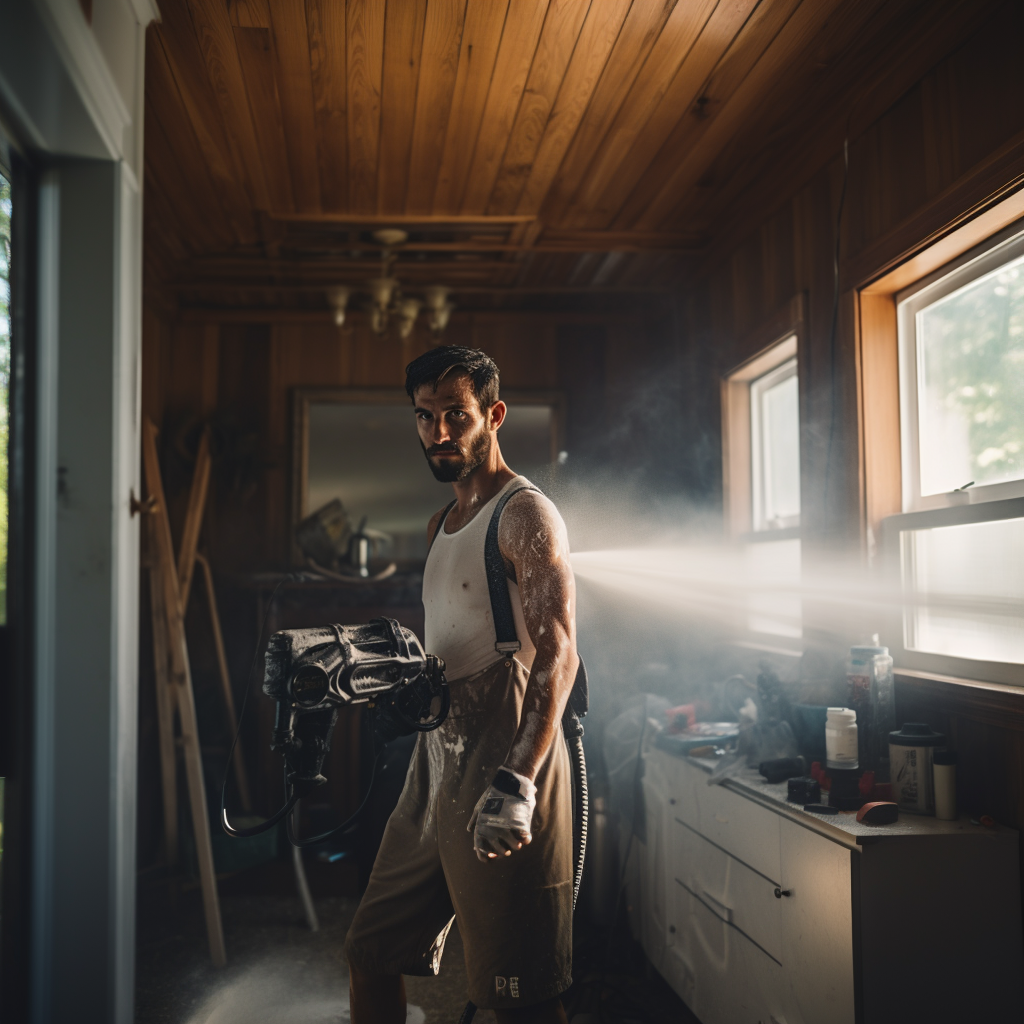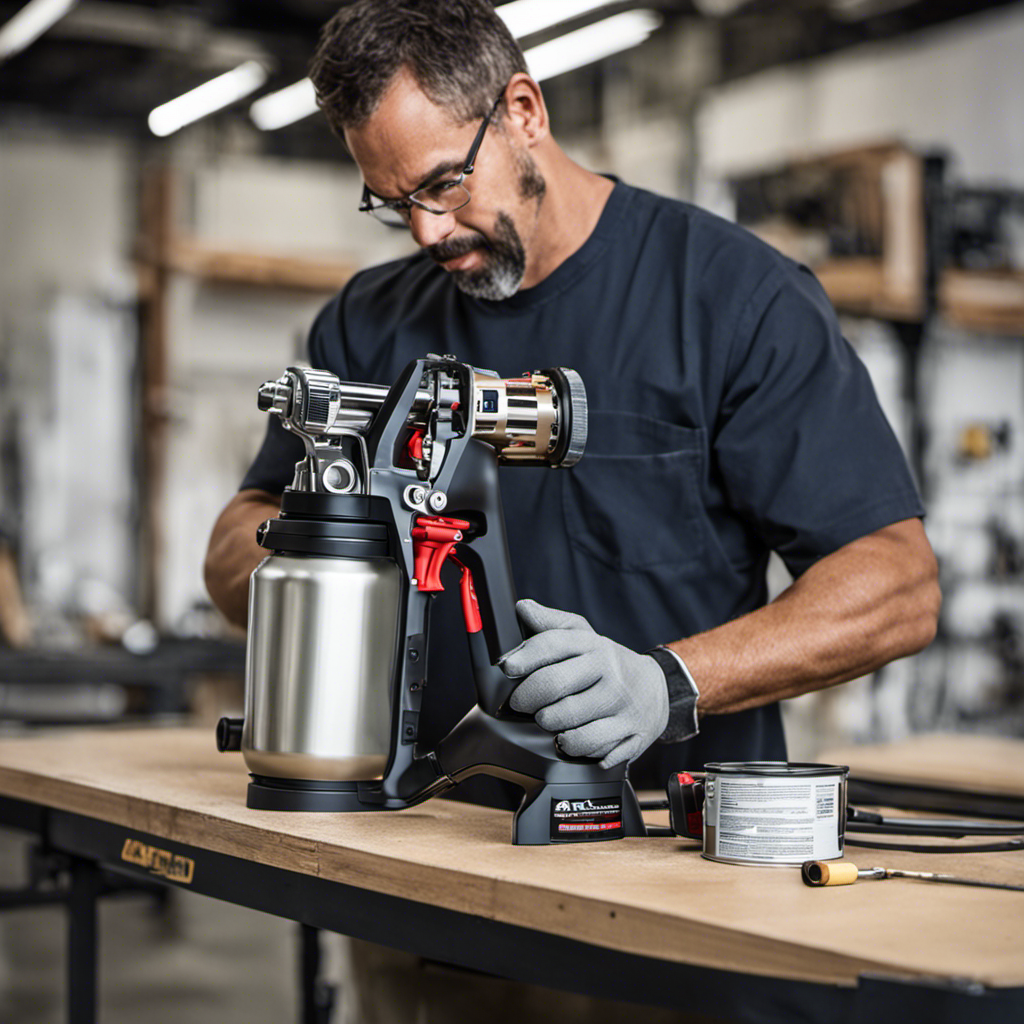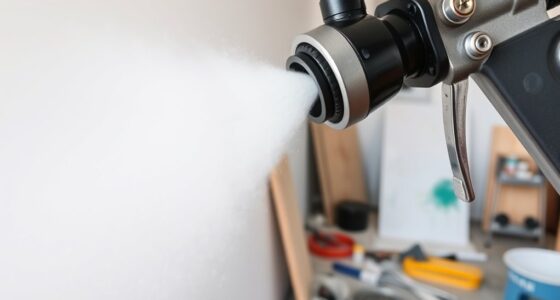To prevent hose kinking and tangling, regularly inspect and clean your hose to spot damage early. Use a reel or wall-mounted hanger to store it properly, keeping it loosely coiled and out of direct sunlight. When working, uncoil slowly and avoid tight bends that cause stress. Proper storage and handling help maintain smooth flow and extend your hose’s lifespan. Keep these tips in mind, and you’ll find effective solutions for managing hose issues more easily.
Key Takeaways
- Regularly inspect and clean the hose to identify wear, cracks, or debris that can cause kinks and tangles.
- Use hose reels or wall-mounted hangers to keep hoses neatly coiled and prevent twists during storage.
- Coil hoses loosely and avoid tight bends to reduce stress and prevent kinking during use and storage.
- Store hoses in shaded areas and drain residual water or paint to prevent material damage and tangling.
- Handle hoses carefully during uncoiling and recoiling to minimize knots, twists, and tangles that impair flow.

Hoses can be incredibly frustrating when they kink or tangle, disrupting your work and wasting valuable time. But many of these issues can be minimized through proper hose maintenance and smart storage solutions. Taking a few moments to care for your hose can make a significant difference in how smoothly your painting projects go. Regularly inspecting your hose for signs of wear, cracks, or weak spots allows you to catch problems early before they turn into kinks or leaks. Keeping your hose clean by rinsing it after use prevents debris and paint buildup, which can cause stiffness and tangling down the line. Also, guarantee that connections are secure so that water or paint flows smoothly without forcing the hose to bend awkwardly or kink.
When it comes to storage solutions, how you store your hose matters just as much as how you maintain it. A tangled or improperly stored hose is more prone to kinks and tangles, which can damage the material over time. Using a hose reel or a hose cart helps keep the hose neatly coiled and prevents it from twisting or knotting. These devices allow you to wind your hose evenly, reducing the chances of sharp bends that cause kinking. If you don’t have a reel, a simple hose hanger mounted on a wall or fence can also do the trick, providing a designated space for your hose to hang freely without tangling. Avoid leaving your hose in direct sunlight for prolonged periods, as UV rays can weaken the material, making it more susceptible to kinks and cracks. Additionally, when storing your hose, make sure it’s completely drained of any residual water or paint to prevent freezing or cracking in colder weather. Coil it loosely rather than tightly, as tight coils can create pressure points that lead to kinks. When you’re ready to use the hose again, uncoil it slowly, checking for any knots or twists that could cause problems during operation. Proper hose maintenance and storage not only extends the life of your hose but also ensures optimal performance. By incorporating these simple hose care tips and investing in effective storage solutions, you’ll extend the life of your hose and reduce the likelihood of kinks or tangling interfering with your project. Proper care not only saves you time and frustration but also guarantees consistent flow and performance when you need it most. Remember, a well-maintained and correctly stored hose makes your painting tasks easier, faster, and more efficient.
Frequently Asked Questions
How Often Should I Inspect My Paint Sprayer Hose for Damage?
You should inspect your paint sprayer hose for damage regularly, ideally before each use. The inspection frequency depends on the hose material and how often you work with it. Check for cracks, leaks, or kinks that could cause issues. By doing quick visual checks and handling the hose gently, you prevent problems and guarantee smooth operation, extending your hose’s lifespan and maintaining safe, efficient painting sessions.
What Types of Hoses Are Most Resistant to Kinking and Tangling?
When choosing hoses, you want options that resist kinking and tangling. Look for hoses made from flexible materials, which bend easily without damage, and those with reinforced design that prevents twisting and tangling during use. Such hoses are durable and easier to maneuver, reducing frustration. You’ll find these features in high-quality, professional-grade hoses, making your painting tasks smoother and more efficient.
Can Hose Length Affect the Likelihood of Kinking or Tangling?
Hose length can definitely determine your discomfort. Longer hoses tend to tangle and kink more easily because they’re prone to pulling, twisting, and tangling. Choosing a hose with a suitable diameter and flexible material can help, but keep it as short as practical. Shorter hoses stay more supple and less susceptible to tangling. So, opt for the shortest, most flexible hose with the right diameter to keep your project smooth and stress-free.
Are There Specific Storage Methods to Prevent Hose Problems?
To prevent hose problems, you should always store your paint sprayer hose properly. Use a hose reel to keep it organized and avoid unnecessary twists. When storing, practice proper coiling techniques to prevent kinks and tangles. Make sure the hose is not stretched or bent sharply, and keep it off the ground in a dry, cool place. This approach prolongs your hose’s lifespan and guarantees smooth operation every time.
How Do Temperature Extremes Impact Hose Flexibility and Durability?
Did you know extreme temperatures can reduce hose flexibility by up to 50%? When exposed to high heat, hose material can soften, making it prone to kinking, while cold temperatures make it stiff and brittle, risking cracks and leaks. Temperature effects weaken your hose’s durability, so always store it in a climate-controlled area. Proper storage helps maintain hose flexibility and extends its lifespan, ensuring smooth and safe painting sessions.
Conclusion
To keep your paint sprayer hose from turning into a tangled mess or a kinked nightmare, stay proactive and mindful with your setup. Think of your hose as a loyal friend—you want to treat it gently and give it room to breathe. Regular checks and proper storage are your best tools to prevent headaches. With a little care, your hose will stay as smooth and flexible as a well-oiled machine, making your painting projects much easier.
Franz came aboard the Paint Sprayer Zone team with a background in both journalism and home renovation. His articulate writing style, combined with a passion for DIY projects, makes him an invaluable asset. Franz has a knack for breaking down technical jargon into easy-to-understand content, ensuring that even the most novice of readers can grasp the complexities of paint sprayers.










